Search
Search Results
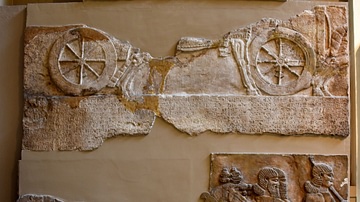
Image
Assyrian Chariots
This wall panel, one of a series, shows two disconnected scenes. Above is part of a battle. Below, the royal chariot waits behind Tiglath-pileser III, who was shown on a panel to the right. The writing in the middle deals with the Assyrian...
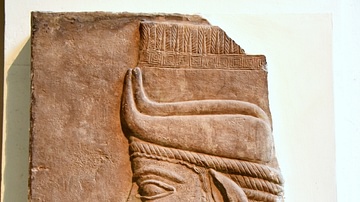
Image
Assyrian Winged-bull Head
This fragment of a human-headed winged-bull, from Tiglath-pileser III's palace, is carved in low-relief like a wall panel. There is a marked contrast with the colossal figures in very high relief, of both earlier and later periods. Assyrian...
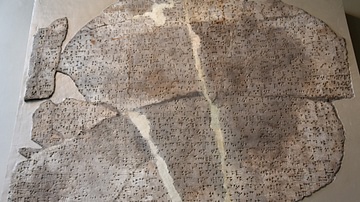
Image
Door Slab from the Central Palace, Nimrud
These cuneifrom inscriptions describe some of the military campaigns of the Assyrian king Tiglath-pileser III (reigned 744-727 BCE) and were probably first placed in a doorway of the Central Palace built by this King at Nimrud. Assyrian...
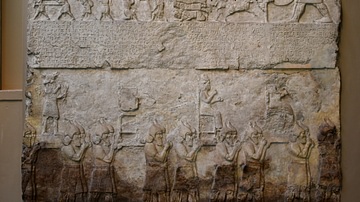
Image
Assyrian Military Campaign Against Syria
This wall panel, one of a series, shows 2 disconnected scenes. Above, Tiglath-pileser III's army is attacking a town, perhaps in Syria. Below, Assyrian soldiers carry "gods" captured from a defeated enemy. The writing in the middle describes...
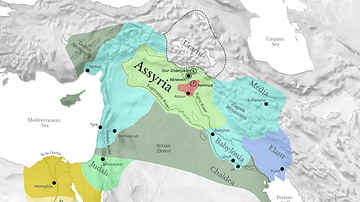
Image
Neo-Assyrian Empire c. 912 - 612 BCE
Map of the Neo-Assyrian Empire c. 912 - 612 BCE, showing expansion by Shalmeneser III (r. c. 859 - 824 BCE), Tiglath-Pileser III (r. c. 745 - 727 BCE), Sargon II (r. c. 722 - 705 BCE), Sennacherib (r. c. 705 - 681 BCE), and Ashurbanipal (r...

Image
Phoenician Bronze Bowl from Nimrud
Over 150 bronze bowls were found in a palace at the city of Nimrud. These bowls were made in Phoenicia (modern-day Lebanese and Syrian coasts), and were brought to Nimrud as tribute or booty by one of the kings who campaigned in the west...
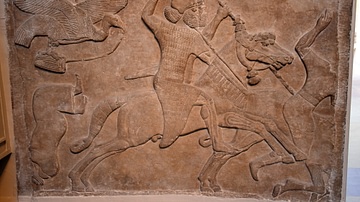
Image
Assyrian Battle Scene
An enemy horseman is ridden down by a pair of a armored cavalrymen in the Assyrian army. The hair style and shape of the beard suggests that these men are not Assyrians but foreign auxiliaries. A grim but authentic battlefield detail is the...
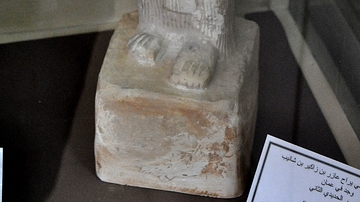
Image
Statue of Yerah' Azar
The inscriptions of this limestone statue mention that the statue belongs to Yerah'Azar, son of Zakir, son of Sanipu. Sanipu is known to have submitted to the Assyrian king Tiglath-Pileser III in the year 733 BCE. The eyes were originally...
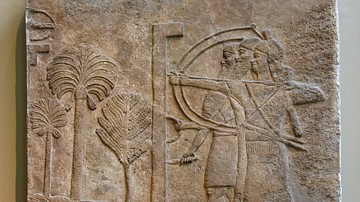
Image
Babylonia under Assyrian Siege
Date palms indicate that the city, most of which were on an adjacent slab, was probably Babylonia. It stood by a river or a canal. An Assyrian soldier holds a large body shield and two archers take aim. Assyrian, reign of Tiglath-pileser...
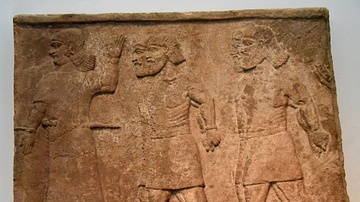
Image
Review of Arab Prisoners, Assyrian Relief
This is part of a series of reliefs showing Arab prisoners brought before the Assyrian King Tiglath-pileser III (reigned 744-727 BCE). The hands of two women prisoners are visible on the extreme right. The prisoners are led by an Assyrian...